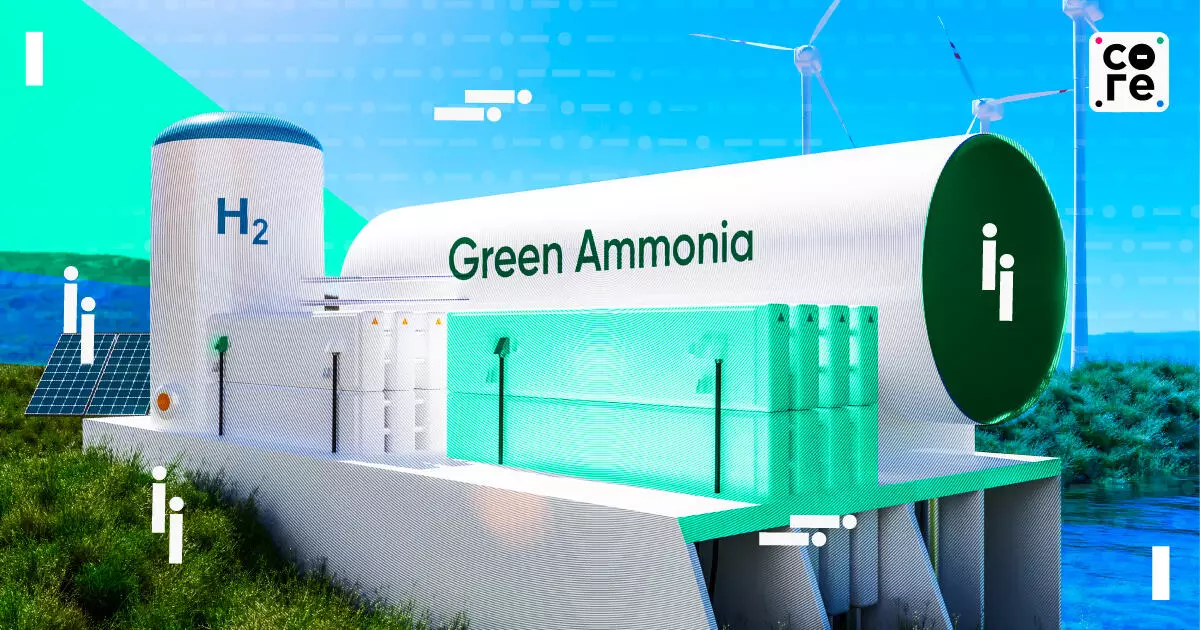
India Sets Global Low For Green Ammonia, But Delivery Will Be The Real Test
Subsidies cushion the bids, the definition of “green” is more vague than certain global standards, and most projects are still in the nascent stage.

The Gist
India has achieved a global record by discovering the lowest price for green ammonia at $571 per tonne, positioning itself as a leader in renewable energy.
- Green ammonia is produced from renewable resources and serves as a carbon-neutral fertiliser.
- The price discovery comes amid challenges such as reliance on subsidies and the vagueness of 'green' definitions.
- India aims to reduce its ammonia import bill while striving to meet net-zero targets through innovative energy solutions.
Why Green Ammonia Matters
As governments and corporates rush to meet net-zero targets, green hydrogen is being seen as a promising clean energy source t...
Why Green Ammonia Matters
As governments and corporates rush to meet net-zero targets, green hydrogen is being seen as a promising clean energy source to replace fossil fuels in heavy industries and transport. Think green hydrogen-fuelled trucks and green hydrogen-run steel plants.
Green ammonia plays another important role. It is an efficient form of transporting hydrogen. It is also an essential component in urea and other nitrogen-based fertilisers. That is exactly where India, the world’s second-largest fertiliser consumer, has discovered its new price lows this month.
India uses approximately 17–19 million tonnes of ammonia annually. However, most of this is derived from imported natural gas. Green ammonia, produced through water and renewable energy sources, will help meet net-zero goals and also reduce the import bill.
A Global Low
This was the maiden auction to discover green ammonia prices. The Solar Energy Corporation of India (SECI) acted as an aggregator, helping bidders supply to fertiliser makers.
In the ninth round, a bidder agreed to supply green ammonia at Rs 49.75/kg, translating to $571.83 per tonne (at Rs 87 per dollar) — a sharp discount compared to the $782 per tonne in the US and $827 per tonne in Germany, according to IMARC data for April-June 2025.
However, the price includes government-backed incentives. Under the Production Linked Incentives (PLI) scheme, producers will get subsidies of Rs 8.82/kg, Rs 7.06/kg, and Rs 5.30/kg for the first three years, respectively.
The contracts stretch for a decade, and the winning bidders have three years from the signing of a formal agreement to start the supply. Though the incentive is for the three years, the bidders have to supply green ammonia at the discovered prices throughout the ten-year contract.
Not Everyone Is Celebrating, Yet
“That’s the question on everyone’s mind – can the winners deliver the green ammonia at these prices?” said Charith Konda, energy specialist for Institute for Energy Economics and Financial Analysis (IEEFA).
The challenge also lies in the definitions. “India’s green hydrogen standard is somewhat easier to comply with than the European standards, which require stringent temporal matching, geographic, and additionality conditions,” said Konda.
Temporal matching is the process of verifying that the hydrogen is indeed "clean" or "green", and the additionality conditions are met only if the project reduces or removes emissions that wouldn’t have happened without the project.
Green hydrogen is produced through the splitting of water using renewable sources of electricity, in a process called electrolysis. For it to be “green”, the process has to use non-fossil sources, in this case, abundant water and “green” electricity. This definition, experts point out, holds the litmus test for India’s latest discoveries.
Developers here often tap into the grid, which is still heavily coal-powered.
“The green ammonia produced under the current auctions are most likely not RFNBO-compliant, which means that hourly matching of renewable energy from new solar and wind resources is not required,” said Abhinav Bhaskar, co-founder of Geneir, an industrial decarbonisation consultancy, further explains.
RFNBO stands for Renewable Fuels of Non-Biological Origin, or environment-friendly energy that is produced without using fossil fuels.
There are cost realities associated with this as well. Electrolisers — that split water into hydrogen and oxygen — still remain expensive. Transmission infrastructure for renewable energy to plants is also stretched.
“There are many moving parts to the successful execution at the stated pricing, including availability of the needed transmission facilities to flow the renewable power needed to run these green hydrogen units,” said Maulesh Desai, director at CareEdge.
The Challenges
For most bidders, the projects are still in the pilot stage. The risk of delays, financial hurdles and cost overruns looms large.
Much depends on Acme Cleantech, which has won six of these bids, including the record-low bids.
“Another important aspect for cost reduction is access to cheap finance and the REC (a Indian public-sector finance company) provided loans to ACME for its green ammonia projects which could facilitate a better business case for them,” said Bhaskar and added, “A word of caution is that with the completion of nine rounds, the success of the SECI tenders heavily rely on the success of ACME’s green ammonia project.”
Cautious Optimism
Experts still see a promising start. Aggregated tendering like SECI’s auctions could set a precedent for other industries such as refineries, said Amrit Singh Deo, senior managing director, FTI Consulting.
If Indian developers can deliver on their promises, the payoff could be significant.
“India will develop as a competitive supplier of green ammonia globally… As the green ammonia produced in India will lead to lower GHG emissions than grey ammonia, it could still find a market internationally,” said Konda.
Beyond fertilisers, India could potentially also become a global shipping hub, said Bhaskar, if the use of ammonia as a shipping fuel becomes more common.
Although the lowest discovered price for green ammonia makes for a good headline, the real developments will be seen on the ground over the next decade.
Subsidies cushion the bids, the definition of “green” is more vague than certain global standards, and most projects are still in the nascent stage.

